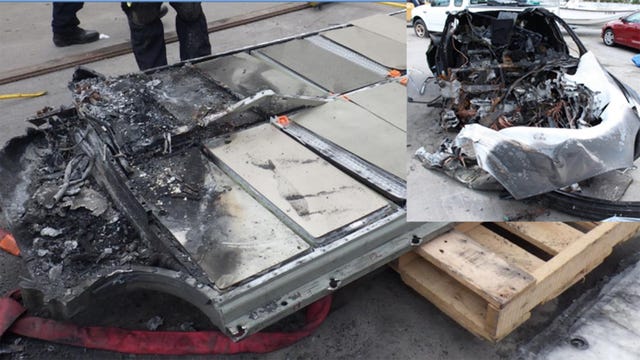Plaintiffs weren’t satisfied after a jury placed just 1% of the blame on Tesla.

A lawsuit attempting to lay responsibility on Tesla after a 2018 crash of a Model S led to the deaths of two teenagers has been thrown out by a Florida appeals court, according to a report from Car Complaints, after the court rejected an argument put forth by the driver’s parents that the electric car’s battery pack was not sufficiently protected against fires.
The lawsuit against Tesla alleged that Barrett Riley, 18, would’ve survived the crash that killed him and 18-year-old passenger Edgar Monserratt Martinez if the battery in the Tesla Model S he was driving hadn’t caught fire. At the time of the accident, National Transportation Safety Board investigators determined that the Tesla had been traveling 116 miles per hour in a 30-mph zone, in a turn with an advised speed of 25 mph.
Riley was known for this sort of driving, according to police records: less than two months before the crash, he’d received a ticket for going 112 mph in a 50-mph zone. His parents reportedly had Tesla adjust the Model S to prevent the car from going any more than 85 mph; Riley, however, then went back to Tesla and had them turn off what court documents described as “loaner mode.”
Riley’s parents sued Tesla for turning off the reduced speed mode and for the battery catching fire. The civil suit claimed that the car’s battery walls weren’t thick enough and that the battery lacked fire-retardant material that could’ve saved Riley’s life.
The plaintiffs initially brought in a battery expert to back up their claims; according to Car Complaints, however, a judge excluded that opinion, and dismissed their claims about product liability because the plaintiffs didn’t present any evidence that a battery defect caused Riley’s death, but allowed the case to go to trial on the negligence claim over the removal of the speed limiter.
In 2022, a Florida court found that Tesla was 1% at fault and said that it should pay out $10.5 million; the same court found that Riley’s father, James, was 9% liable and that Riley himself was 90% at fault for his death. James, however, appealed the result.
As of March 2025, however, the U.S. Court of Appeals for the Eleventh Circuit has knocked down the appeal, agreeing with the lower court’s ruling that, had extreme speed not been involved, the battery and its cells wouldn’t have been crushed. “there was no evidence for a reasonable jury to conclude that Barrett would have survived but for the lack of intumescent material in his Tesla’s battery pack,” the court wrote.


